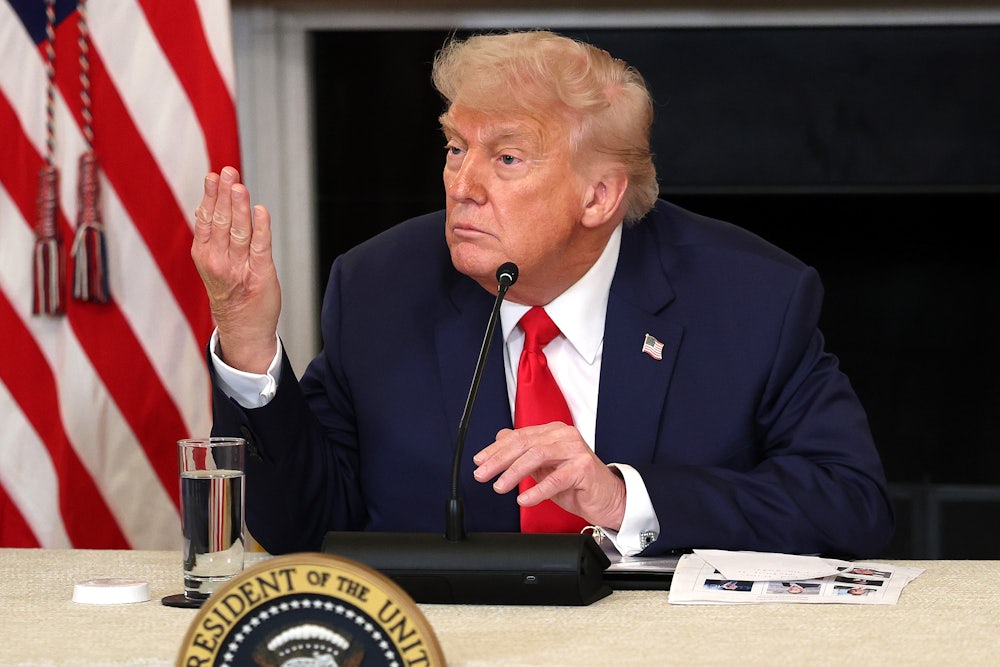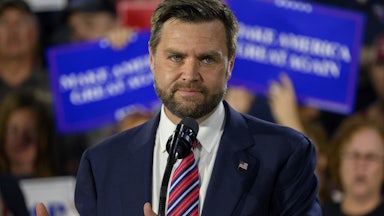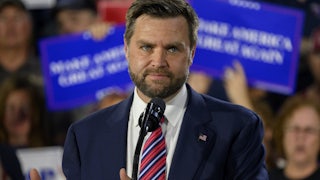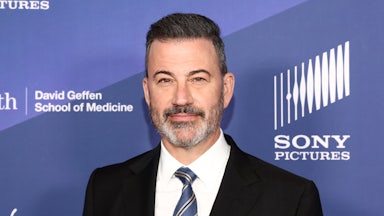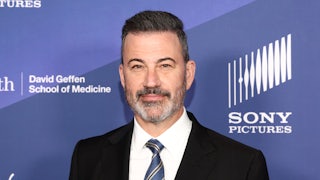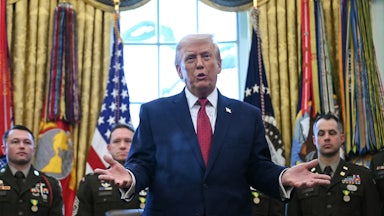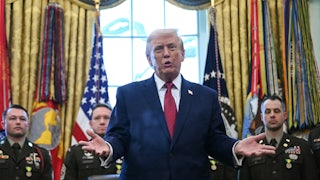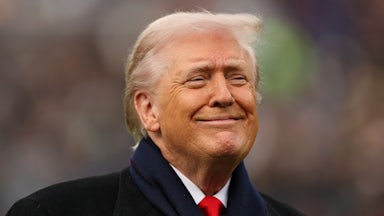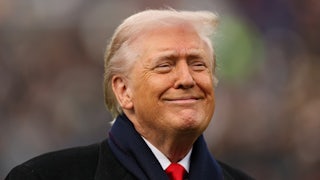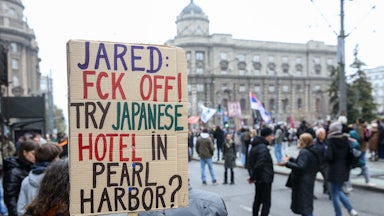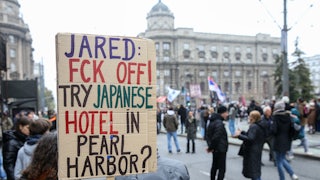As on many other policy questions, MAGA doctrine regarding the proper division of power between states and the federal government departs from traditional Republican ideology.
For half a century after Richard Nixon declared “the New Federalism” in August 1969, Republicans echoed Nixon’s admonition that responsibility should “flow from Washington to the States and to the people.” (Nixon actually said “funds and responsibility,” but President Ronald Reagan took it one step further and killed off Nixon’s federal revenue-sharing program.) The New Federalism, later known just as federalism, said that states and cities were closer to the people and therefore ought to take the lead. In practice, federalism was simply a way for Republicans to limit the federal government’s responsibilities and, eventually, its expenses.
The Trump administration’s view of the proper division of state and federal responsibility is less consistent than traditional federalism. That’s amply evident from Trump’s diverging policies regarding immigration protests in Los Angeles and the start of hurricane season along the Atlantic and Gulf coasts. The only unifying principle I see is “Do whatever maximizes the likelihood of physical harm.”
MAGA’s vision of federalism started to come into focus for me last Friday. It was a beautiful day here in Washington, D.C., so I bought myself an Italian hoagie at Bub and Pop’s and walked over to Dupont Circle to eat it under a tree in the small grassy park situated there. But when I arrived, the Circle was barricaded. The National Park Service had done this to keep out revelers from WorldPride 2025, a celebratory LBGTQ gathering scheduled the next day—even though, as the Park Service’s own website points out, Dupont Circle has been a gathering place for gay pride celebrations for 50 years. The sight of the fencing infuriated me, and I thought: Donald Trump is trying to provoke a riot.
It turns out I was off by 3,000 miles. The Park Service agreed in the nick of time to take the Dupont Circle fencing down, perhaps because the Trump White House had shifted its attention to Los Angeles, where demonstrations began Friday against ICE raids on a Home Depot outlet and a clothing store called Ambience. The raids and the counterdemonstrations spread—especially after ICE injured and detained David Huerta, once declared by the Obama White House a “champion of change,” who, as president of Service Employees International Union California, was there to observe and document one of the raids. Even after that, the Los Angeles Police Department commended protesters for remaining peaceful.
President Donald Trump apparently finds such nonviolence unacceptable. To stir the pot, and over the protest of California Governor Gavin Newsom, Trump deployed up to 2,000 National Guard troops. Newsom called the maneuver “purposefully inflammatory,” which it was, and predicted that it would “only escalate tensions,” which it did. By Sunday night, there were full-on riots. On Monday, Trump sent in the Marines.
If MAGA federalism dictates that federal intervention is warranted against protests well under the governor’s and the metropolitan police’s control, it further dictates that federal intervention is not warranted against hurricanes that pretty much by definition aren’t under anybody’s control (except insofar as they’re worsened by man-made climate change).
David Richardson, Trump’s acting administrator for the Federal Emergency Management Administration, baffled and appalled his staff on June 2 when, on being told that hurricane season had begun, he replied that he never knew there was any such thing as a hurricane season. Richardson’s spokesperson later tried to excuse this by saying that he was joking, but in fact the real joke is Trump’s weirdly indifferent approach to disaster aid.
In April, Trump turned down his own former press spokesperson, Arkansas Governor Sarah Huckabee Sanders, after her state was hit with deadly tornadoes. (She later persuaded him to change his mind.) Visiting North Carolina at the end of January to gauge the state’s recovery from last September’s Hurricane Helene, Trump talked about “maybe getting rid of FEMA.” Richardson’s predecessor as acting FEMA administrator, Cameron Hamilton, contradicted Trump last month by telling the House Appropriations Committee that FEMA should not be eliminated. In response, Trump fired him.
FEMA’s still there, but just barely; it’s still reeling from hundreds of staff cuts in February by the White House Office of Personnel Management. Eleven requests to declare this or that state a disaster area have yet to be answered, including two from April; in late May, the backlog was 17 requests. Most of the pending requests, weirdly, are from red states—severe storms and flooding in Tennessee, Missouri, Indiana, Kentucky—so you can’t accuse Trump of playing favorites. Citing an internal memo, Scott Dance and Brady Dennis of The Washington Post reported this weekend that those FEMA staffers who remain will no longer go door-to-door after disasters to find victims who might need aid. That job will be left instead to state governments—those little laboratories of democracy.
MAGA health care has a skewed federalism angle too. The “big, beautiful” budget bill currently before the Senate would cut Medicaid, mostly by screwing around with eligibility—in addition to its spurious work requirement, the bill would repeal a Biden regulation intended to simplify the process of establishing and renewing Medicaid eligibility—but it would also require states to contribute $72 billion more to pay for coverage. That’s consistent with Trump’s telling the states, during his first term, that they were on their own in dealing with the Covid pandemic. They were, too—but Trump has since threatened to defund local schools should they require vaccinations.
Intermittently and ineffectually, Trump opposed state Covid mask mandates during his first term. During his second term, he opposes them for protesters. But he’s copacetic with masks worn by federal ICE enforcers.
Then there’s nutrition. BBB would impose the largest cut ($300 billion) in the 86-year history of the food stamps program, which is funded by the federal government and administered by the states. But the bill micromanages state work requirements, raising the maximum age up to which food stamp recipients must work from 54 to 64. (Trump also wants to cut $1.3 billion from the Special Supplemental Nutrition Program for Women, Infants, and Children.)
In state and local affairs, MAGA federalism doesn’t favor large federal intervention or small federal intervention. Rather, it favors federal intervention that will worsen safety and health. This applies both to red states and to blue ones; Trump’s only partisan loyalty in this area is to the Grim Reaper. Poor nutrition is good. Ineligibility for hospital care is better. Injury or death are best of all. Perhaps, instead of MAGA, we should call Trump’s variety of federalism MADA, for Make America Dead Again.
